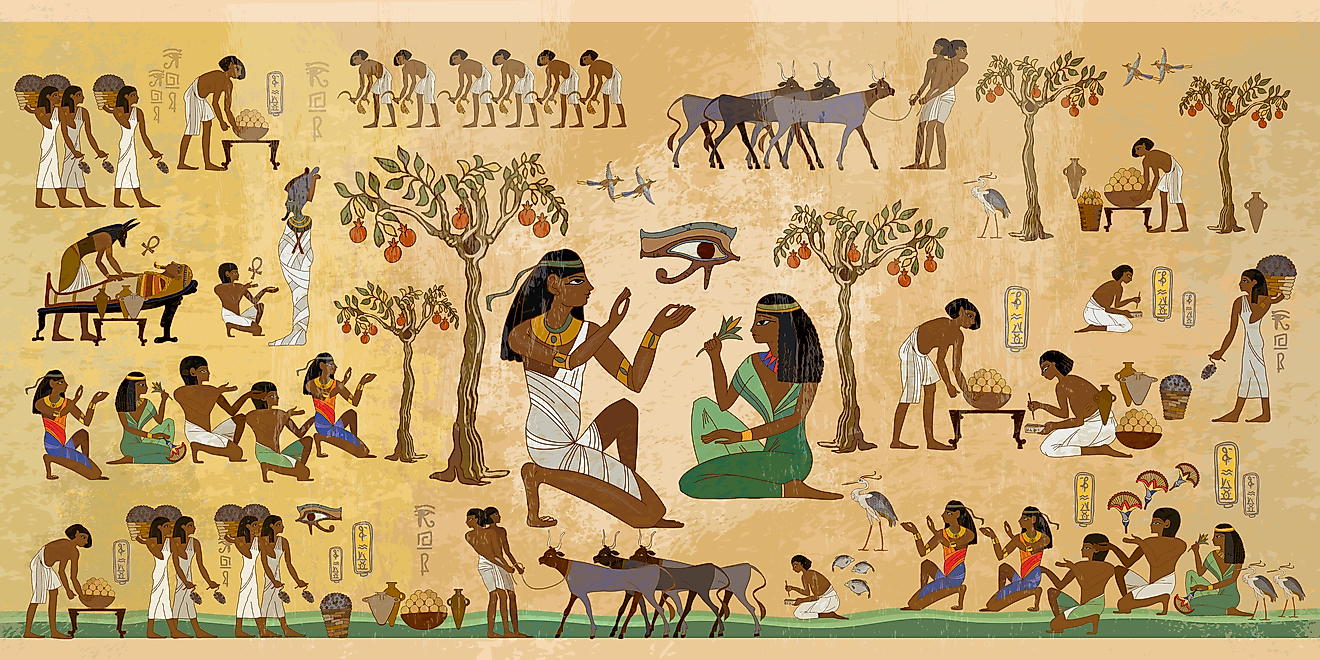
11 Roman Inventions That Shaped The Modern World
Spanning from 650 BC to 450 AD, the Roman Empire was one of the most significant civilizations and has left a lasting impact on the present world. From language and art to technology and architecture, Ancient Rome’s great minds paved the way for many industries. Bolstered by grand leaders such as Julius Caesar and Octavian, Rome was at the forefront of invention. Many Roman inventions were so far ahead of their time that they shaped items and techniques for the entire modern world. To truly understand how significant these inventions continue to have on societies around the world, let us take a look at some of the most amazing Roman inventions still in use today!
Roads
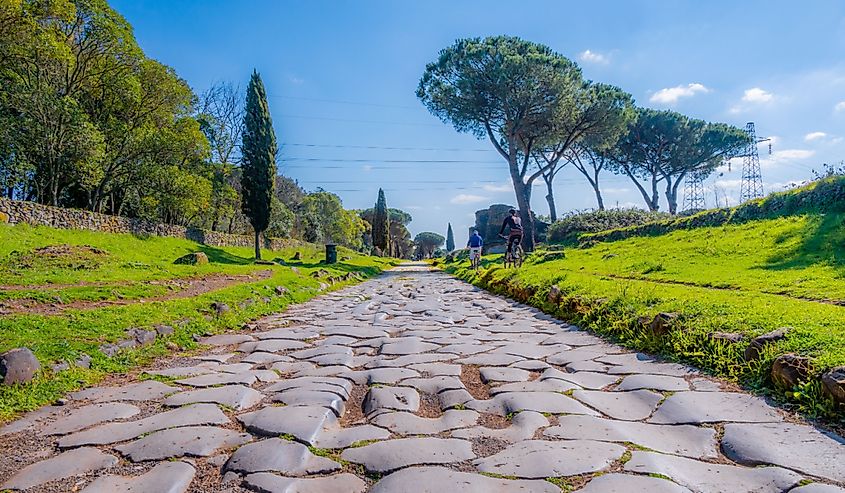
Whether it is taking the bus to work or heading out on a road trip, roads, and highways are essential for human transport. Spread across the globe, the intricate streets we see today were inspired by the advanced roads of the Romans. While Romans were not the first to construct roads, they were true to the phrase “all roads lead to Rome,” and built complex paths across cities. By layering materials such as leveled earth, small stones, and concrete (another Roman invention), they managed to create a strong foundation that could last for centuries. Topped off with paving stones spanning nearly 5 meters in width, the roads allowed multiple heavy vehicles to pass without issue. By the Roman Empire’s peak, there were hundreds of routes stretching for thousands of kilometers through most of Europe and nearby areas. These roads facilitated the movement of troops, trade, military movement, and even the exchange of knowledge. Even today, the highway you drive takes immense inspiration from these 2,000+-year-old Roman roads!
Traffic Signs

While roads are amazing, some might be wondering how the Romans knew where they were going. As of today, we can rely on traffic signs and milestones that tell us the distance to nearby towns and landmarks. Well, it should be no surprise that these are also inventions of the Roman Empire. Dating back to the first Roman road in 312 BC, the Via Appa, milestones were used to convey useful information to travelers. This included details of the individual in charge of maintaining the road as well as mile markers indicating the distance to Rome. As more roads were made, the Romans took this even further by constructing horse-changing stations at regular intervals for comfortable travel. So, after thanking the Romans for the road you are on, you can also thank them for the signs that tell you where to go and keep travelers safe!
Concrete
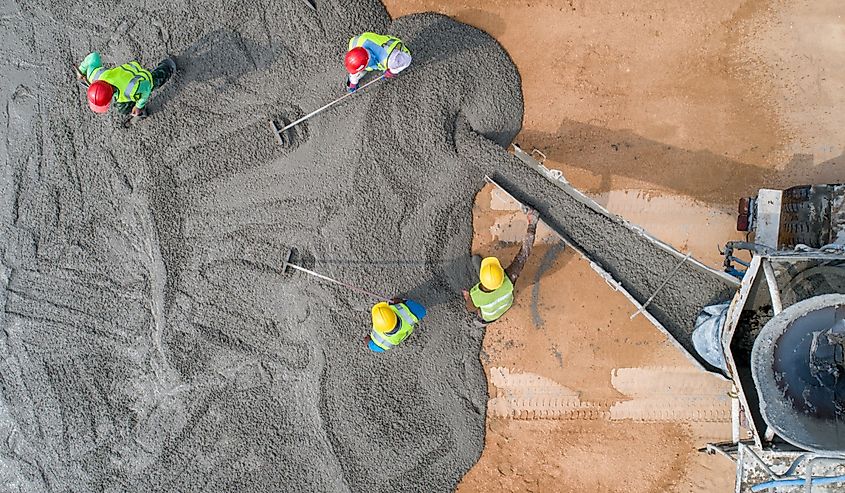
Apart from just roads and traffic signs, the Romans were building large cities and structures at the peak of their empire. So, what material were they used to construct these massive buildings that lasted for thousands of years? The answer to this is the same one we use today: concrete. Although concrete had been around since 6500 BC, no civilization was as prolific with the building material as the great minds of the Roman Empire. Also known as opus caementicium, Roman concrete improved upon older techniques to create a durable and versatile building material.
Combining lime, water, and small rocks/bricks with specific types of volcanic ash, they created concrete for all sorts of structures. This volcanic ash was key in the process as it acted as a natural pozzolan to induce chemical reactions creating hydraulic cement. This process was so effective that the concrete could harden underwater, making it ideal for marine structures. Thanks to this, the Romans were able to produce iconic buildings such as the Pantheon and the Colosseum which are still standing today. So, from the ancient structures of Rome to the buildings you see today at home, Roman concrete’s influence is prevalent across the world.
Arches
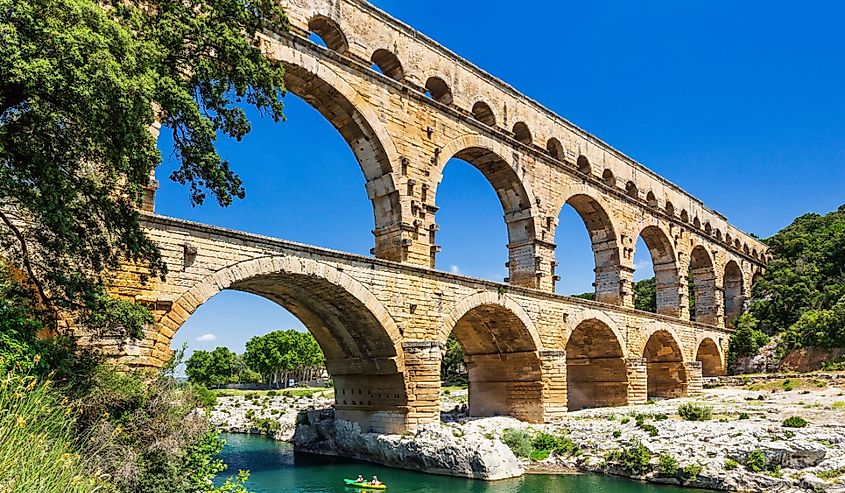
Speaking of buildings, over the past few centuries, structures have seen many changes in complexity and creativity. From the urban grandeur of the Burj Khalifa to the charming warmth of the Taj Mahal, it is these unique designs that captivate our interest. One design element that does this quite well is the stunning arch, a beautiful shape and feat of engineering. For this graceful semi-circle, we can thank the masterminds of the Roman Empire. Taking inspiration from the Egyptians and Greeks who invented primitive arches, the Romans improved upon and began systematically using the arch. With its ability to compress the pressure of weight, they incorporated the arch into large and complex buildings that could support immense weight. By the first century BC, Romans had begun using aches for bridges, aqueducts, and buildings using its graceful power to their advantage. One of the greatest feats of this is the magnificent Colosseum which is lined with about 200 arches that have supported its outer wall for years. So, the next time you look at a beautiful arch in a building, you will know that it is a product of Roman innovation.
Underfloor Heating (Hypocaust System)
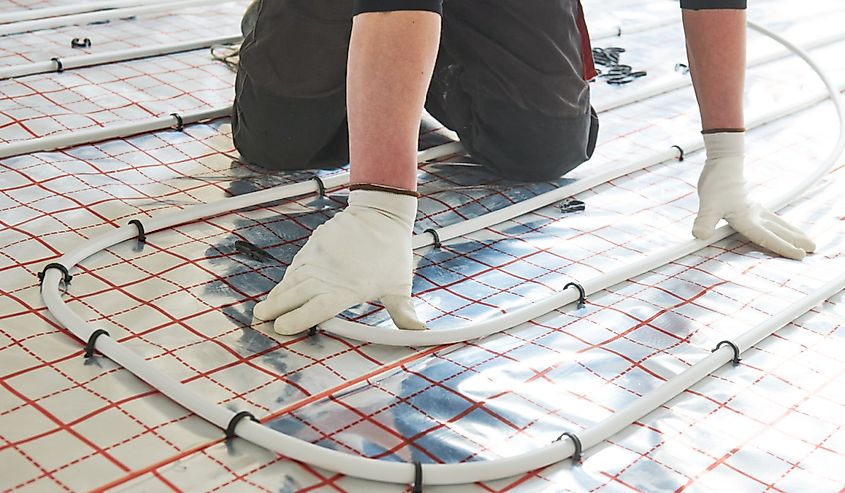
An invention often taken for granted by many today, indoor heating is present in many buildings you may enter. From homes to offices, centralised vents shoot out hot air keeping you nice and warm during winter months. This stunning idea of indoor heating is another one we can accredit to the Roman Empire. Although quite primitive at the time, Romans created the ‘hypocaust system,’ a method of underfloor hearing to warm buildings. The system used a furnace placed in a space beneath the floor supported by multiple concrete pillars. This furnace would heat the floor and walls creating a comfortable temperature indoors. Parallelly, smoke and hot air were funneled out with special flues built into the walls. Due to its complexity, the hypocaust system was mostly seen in expensive homes or public buildings such as Roman bathhouses. That said, this underfloor heating system shaped the indoor heating we adore today and is still used in some places around the world.
The Postal System (cursus publicus)
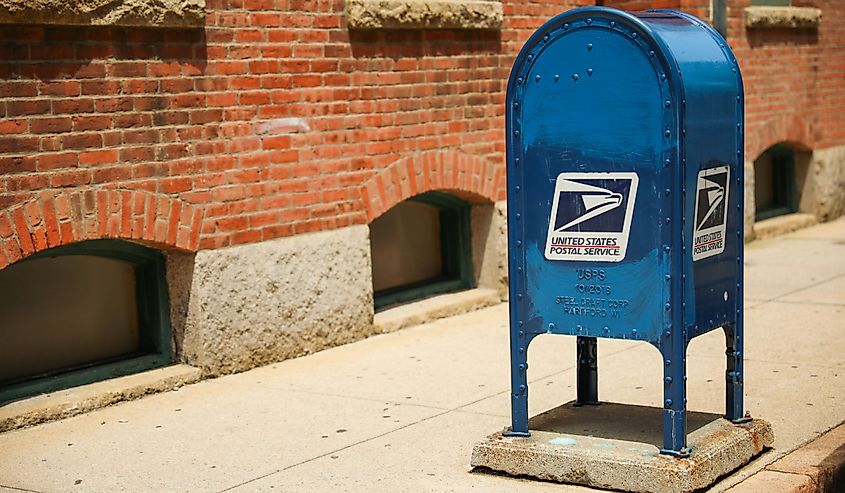
For hundreds of years, sending letters via post was the prime mode of communication across long distances. People would send business proposals, love letters, and even important documents through the intricate and global postal system. Even today, if you need to send a large package, you’ll probably send it via UPS or FedEx. Well, the entire concept of postal service is largely credited to Roman Emperor, Augustus, and his cursus publicus. Established around 20 BC cursus publicus was a system that facilitated the transfer of messages and notices across provinces. This was done with horses and specialized carts known as rhedæ. Compared to previous postal systems, the Romans were much more streamlined thanks to their high-quality roads. To this end, the average messenger could cover about 80 km (50 mi) per day, making it a huge success. So, drop a Roman numeral in your next post to remember the stunning Roman postal service!
Surgical Tools & Techniques
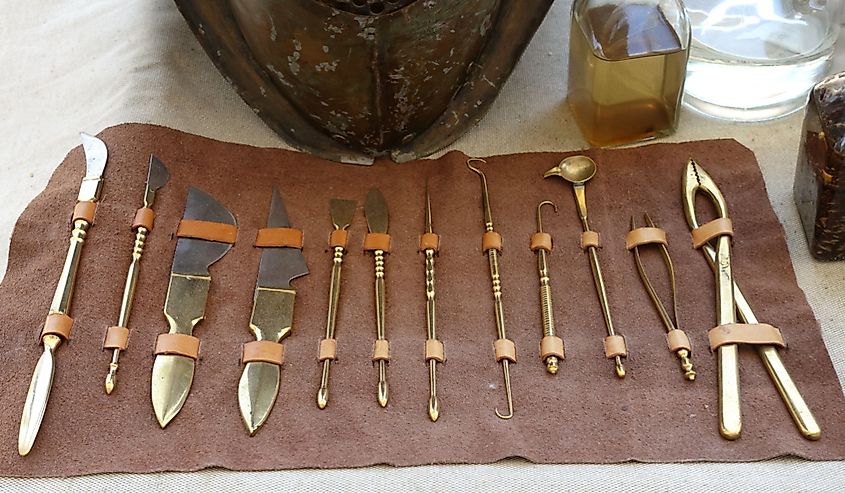
While surgery and medical tools may seem like recent inventions, they have been around for thousands of years. Dating back to the early centuries BC, some of the first and most advanced surgical tools were uncovered in the Roman cities of Pompeii and Herculaneum. Among more than a dozen advanced tools, many such as the forceps, scalpel, vaginal speculum, and bone saw remained unchanged until the 20th century. Along with this, Romans were also ahead of their time in medical knowledge. This was prevalent as they were some of the first to deploy field medical corps that used items such as arterial clamps to save lives on the battlefield. Similarly, they were at the forefront of procedures such as the cesarean section, all of which shaped modern medicine and tools. So, we can easily say that the Roman advancements in medicine shaped the healthcare system of today.
Newspapers (Acta Diurna)

The first thing most many people do when they wake up is read the newspaper. From world politics to local events, it is a great way to stay up-to-date and connected with the world. Go back about 2,000 years and you’ll find that the Romans also enjoyed daily updates on news. To this end, they created their form of newspaper known as Acta Diurna (Daily Acts). Acta Diurna was a news bulletin published by the government that would contain information on politics, military updates, trials, births, and much more. Updated daily, these daily acts kept the public informed of important topics and were a great way to stay in touch. So, while it may not be the same as modern newspapers, the Romans did begin the path towards daily news reporting to the public.
Bound Books
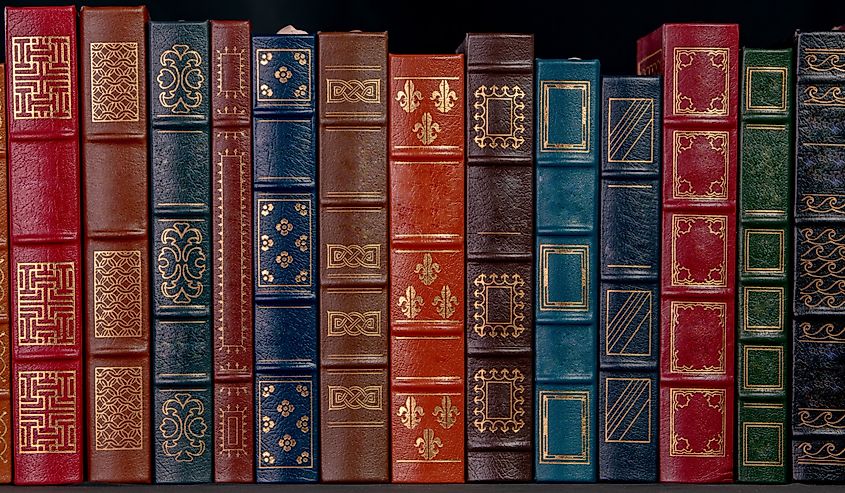
When you think of reading, the first thing that comes to mind is a regular book. With many pages bound together, our modern-day books are another one of Ancient Rome’s great inventions. Before the Roman Empire, most civilizations such as the Greeks didn’t need books as their early texts did not exceed 50 pages. To this end, texts were carved into wax slabs or scrolls for easy reading. That said, as texts got longer in the early centuries BC, scrolls became a hassle as they were brittle and difficult to store. To solve this problem, Julius Ceaser commissioned a collection of papyrus that was bound together, creating one of the first ‘books’ in history. This book was much safer, could hold many volumes, and facilitated front and back covers for durability. Since then, the bound book has become popular across the globe and is now the norm. So, a library is technically the brainchild of the great Roman emperor, Julius Caesar.
Public Sanitation System (Cloaca Maxima)
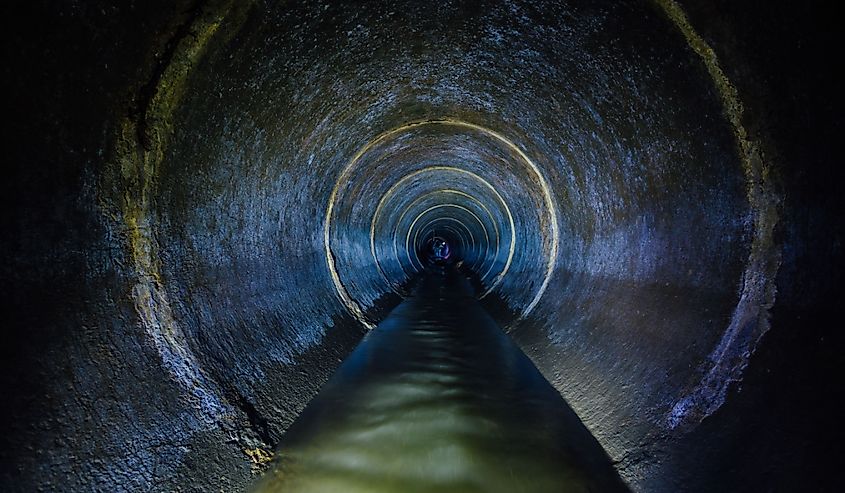
Throughout human history, sanitation has been a major part of civilization. Advancing from open defecation to the dedicated washrooms and sewers we have today, humans have come a long way. That said, have you ever wondered which civilizations were responsible for this change? Among many such as the Indus Valley, Greeks, and Ancient Chinese, the Roman Empire was one of the first to create a complex sewage system for a city. Combining their intellect in construction, waterproof concrete, and piping, the Romans developed the infamous Cloaca Maxima system. Built around 50 BC, this system connected street gutters and public bathrooms in Rome to an intricate network of drainage pipes. These pipes then led to the nearby Tiber River, clearing the city of sewage and waste. The Cloaca Maxima was a profound advancement in hygiene and improved both public health and the city’s aesthetic appeal. Moreover, it was so ahead of its time that after the Roman Empire fell, it took hundreds of years to reach the same level of sanitation again.
Aqueducts
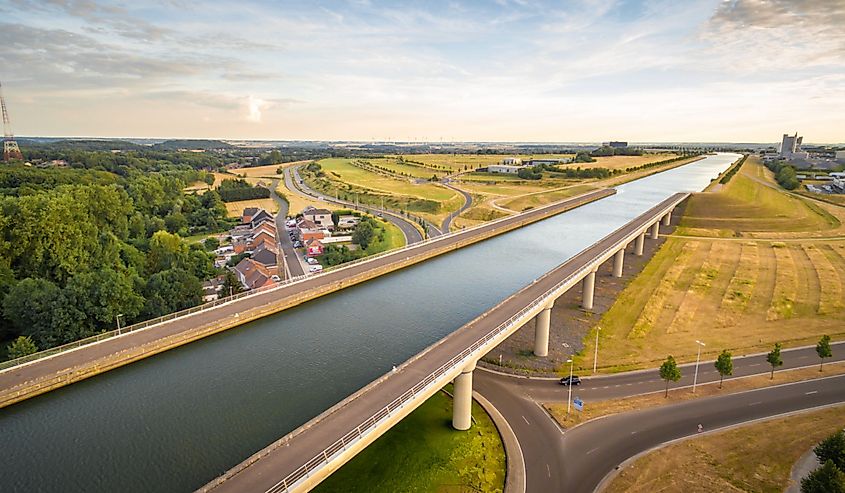
Parallel to public sanitization, Romans also used their advanced knowledge of pipe systems to create aqueducts. The Roman aqueduct was an efficient network of pipes, tunnels, and canals that transported fresh water to populated areas. Built from 300 BC to 230 AD, the network required immense planning and construction to traverse difficult terrain and reach major cities. For example, the city of Rome had 11 aqueduct systems that used bridges to supply water from nearly 100 kilometers away. With support from various Roman emperors, this system developed the framework for water supply and shaped the modern world.
Conclusion
With so many unique and advanced inventions, it is evident that the Romans shaped many parts of the modern world. Whether this is the way you keep in touch with the world via the roads you drive on, the Roman Empire’s influence is prevalent. Without their influence, we might not have many luxuries, techniques, and tools present today. So, the next time you turn up your indoor heating or drink some clean, fresh water, remember to thank the Roman Empire!











